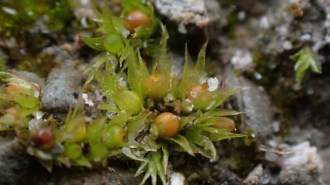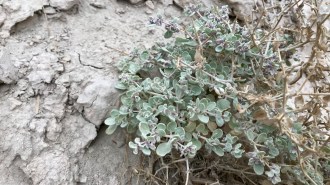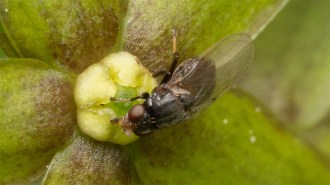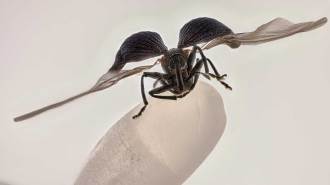Trees ‘remember’ times of water abundance and scarcity
New research helps explain why drought kills some trees whereas others survive

Norway spruce trees are highly sensitive to drought, as was demonstrated by large-scale die-offs during a 2018 drought in Germany.
Olaf Kolle and Henrik Hartmann
How trees fare under drought depends heavily on their past experiences.
In some cases, adversity breeds resilience: Spruce trees that experience long-term droughts are more resistant to future droughts, owing to an impressive ability to adjust their canopies to save water, researchers in Germany report May 16 in Plant Biology.
On the other hand, trees may suffer when they’ve known only wet conditions and are blindsided by droughts. Pines in Switzerland, for example, have needles that appear to acclimatize to wet periods in ways that make them more vulnerable to drought, another group of scientists reported last year.
Together, the results illustrate how trees can “remember” times of abundance as well as scarcity. The latter, as illustrated by the spruce study, bodes well for trees’ ability to cope with a warming world. These findings are among the first to show that trees can become more drought-resistant by adjusting their canopy structure, says plant physiologist Ansgar Kahmen of the University of Basel in Switzerland, who wasn’t involved in the research.
“It does not mean that all trees and all forests will simply adjust to climate change,” Kahmen says. “But it shows that there is at least some capacity for this response.”
It’s not the easiest time to be a tree. Droughts are becoming increasingly common, longer and more severe with climate change, culling trees at scales and speeds never seen before.
To better understand the effects of drought on trees, scientists at the Technical University of Munich launched an experiment in 2014. They used plastic roofs erected above about half of 100 Norway spruce (Picea abies) and European beech (Fagus sylvatica) trees to keep out the summer rainfall, creating a five-year drought. The remaining trees received normal precipitation.
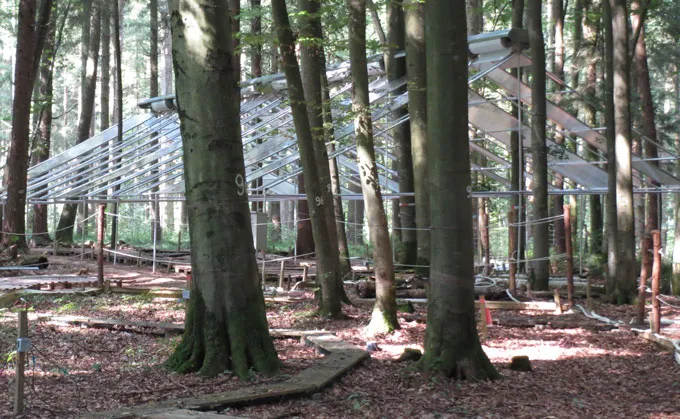
This artificial drought didn’t kill the Norway spruce — a very drought-sensitive species — but it transformed them. Compared with their well-watered neighbors, the drought-exposed spruce grew much shorter shoots and shorter and fewer needles in the spring, ecophysiologist Thorsten Grams and his colleagues report.
Together with the natural loss of old needles, the trees lost about 60 percent of their total needle area over the course of the experiment, making their canopies less dense. Grams sees this as a strategy to better cope with drought: A smaller needle area means the trees lose less water through their stomata — the tiny pores in tree leaves that take up carbon dioxide and release oxygen. (The beech trees didn’t reduce their leaf area by much, perhaps due to their greater drought resistance in general.)
The real test for the trees came during a sudden dry spell in 2022, three years after the end of the experimental drought. “The previously drought-stressed trees … were doing much better under these conditions than the control trees that never saw any drought,” Grams says.
That was evidenced by detailed measurements of needles from the drought-experienced spruce trees, which suggested that they were less physiologically stressed — thanks to the fact that they still had smaller needles and less foliage. “They were still saving water,” Grams says. The soil was much moister underneath them compared with spruce that hadn’t experienced the artificial drought years before.
The water-saving ability of the spruce also appeared to benefit the beech trees beside them, which were also less physiologically stressed during the 2022 drought. Foresters often fell spruce trees with stunted growth as they prefer more productive trees, but Grams says his results suggest they should be left standing, as they may better cope with drought.
“It does not mean all trees and all forests will simply adjust to climate change…. But it shows that there is at least some capacity for this response.”
Ansgar Kahmen
plant physiologist
Alana Chin, a tree ecophysiologist at California State Polytechnic University, Humboldt who wasn’t involved in that study, says, “It is becoming clear that trees prepare themselves for future conditions by adjusting long-lived structures, like evergreen leaves, based on ‘information’ stored from past events.”
Last year, Chin and her colleagues discovered another way that trees can “remember” their past, based on an ongoing experiment in a Scots pine forest in one of the driest regions of the Swiss Alps. While about half of the forests’ roughly 900 pine trees (Pinus sylvestris) are exposed to the naturally dry conditions, sprinklers have been used since 2003 to effectively double summertime precipitation for the remaining trees. In 2013, scientists stopped watering half of those trees, suddenly exposing them to drought conditions.
Using X-ray microscopy to examine 47 fine anatomical details of the pines’ needles and twigs, the team found that the needles of formerly irrigated trees showed greater signs of water stress than the ones that had experienced only drought conditions. To Chin, this suggests that their “memory” of a wet climate somehow made them less able to cope with water scarcity.
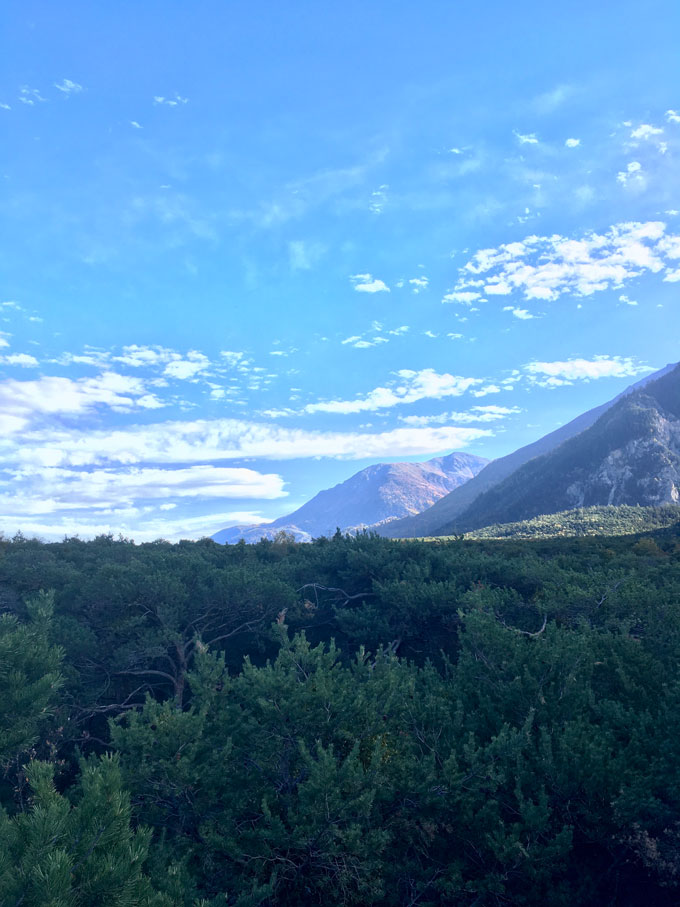
The pine needles also didn’t appear to have much photosynthetic tissue, probably making them less capable of building up the energy reserves necessary to survive a big drought event, instead devoting more tissue to water-saving and defense, Chin says. “It really does seem like just having been exposed to that water did something that weakened them for the future,” almost as if the trees were “waiting” for the wet period to return, she says.
The needles’ sensitivity to drought explains why, in Chin’s view, the formerly irrigated trees aren’t faring well under the dry conditions, with their growth declining and two trees dying outright. Her coauthor Markus Schaub of the Swiss Federal Research Institute for Forest, Snow and Landscape Research based in Birmensdorf, however, argues the trees could compensate for their sensitive needles by having grown deep roots during the watering period, allowing them to access moister soil layers.
While the trees are still being studied, both studies may help explain why trees around the world accustomed to wet conditions have suffered die-offs when caught off guard by sudden droughts.
The Germany study illustrates the physiological risks of having a too-large leaf area that makes trees more vulnerable to sudden droughts, says forest ecologist Craig Allen of the University of New Mexico. As for the Switzerland study, “it just adds a richness and complexity to … the challenges that plants have of tracking climate,” he says.
But young trees that have never experienced a water-rich forest, Chin says, are better placed to acclimatize to a new normal. The same goes for ones experiencing a consecutive series of moderate droughts that reduce leaf area over time, Grams says. It’s still an open question whether they can keep up with climate change and whether other tree species can acclimatize in the same way.
“I have the impression that the trees are much more capable than we expect them to be,” Grams says. “The forest will look different in the future, but there will still be a forest.”
